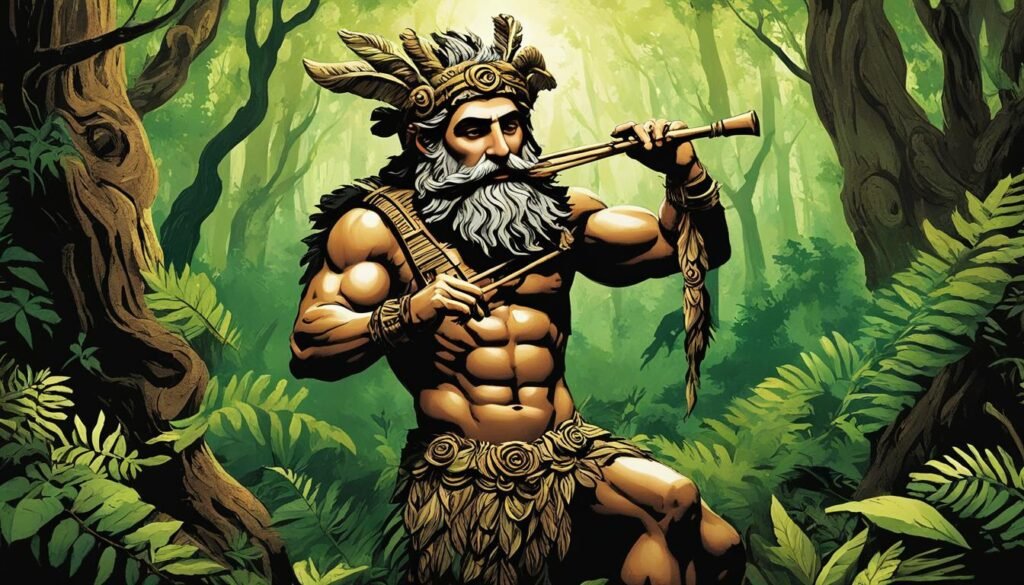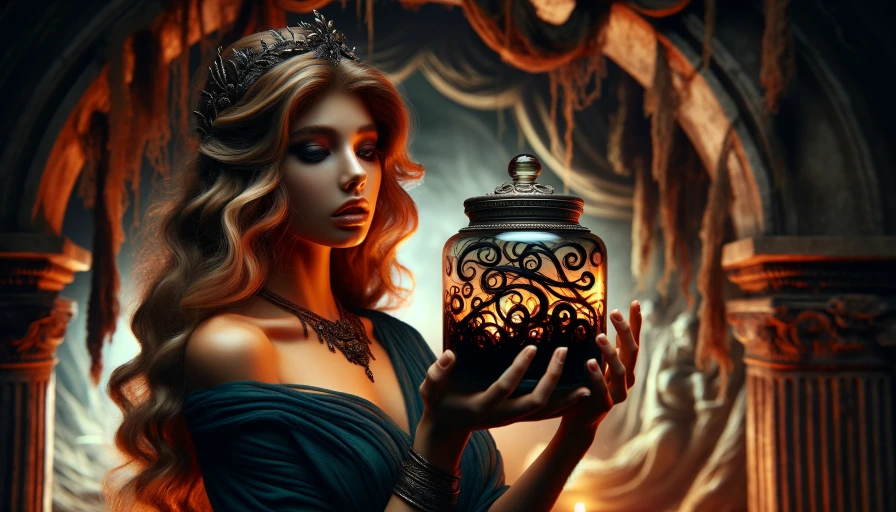Welcome to our exploration of Pan, the fascinating deity of Greek mythology. Known as the god of nature, the wild, shepherds, and mountain wilds, Pan holds a prominent place in Greek folklore. With his distinctive appearance and connection to the natural world, Pan has captivated the imagination of people throughout history.
Who was Pan in Greek mythology? He was the son of Hermes and a daughter of Dryops or Penelope. Often portrayed with the hindquarters, legs, and horns of a goat, Pan is associated with rustic music, particularly the pan flute. His influence extends beyond ancient Greece, as he is revered in both ancient and modern contexts.
Key Takeaways:
- Pan is the god of nature, the wild, shepherds, flocks, and mountain wilds in Greek mythology.
- He is depicted with the hindquarters, legs, and horns of a goat.
- Pan is associated with the pan flute and is connected to fertility and the season of spring.
- He is the son of Hermes and a daughter of Dryops or Penelope.
- Pan is revered in both ancient and modern contexts.
Pan’s Mythological Origins
According to Greek mythology, Pan is believed to be the son of Hermes and a daughter of Dryops or Penelope. His birth caused his mother to flee in terror, and she was transformed into a poplar tree.
Pan’s unique appearance, with goat legs and horns, sets him apart from other gods and highlights his close affinity with nature. This distinctive physical form reflects his dual identity, combining human and animal characteristics.
Pan’s connection to his father Hermes, the messenger of the gods, emphasizes his role as a bridge between the mortal and divine realms.
Throughout Greek mythology, Pan is often associated with music and is particularly renowned for his creation of the Pan flute. Legend tells that he crafted this instrument from the reeds of the nymph Syrinx, who had transformed herself to evade his advances.
With his origins rooted in Greek mythology, Pan’s unique attributes and mythological tales have captivated generations, making him an intriguing figure in Pan mythology and Greek mythology as a whole.
Pan’s Connection to Nature and the Wild
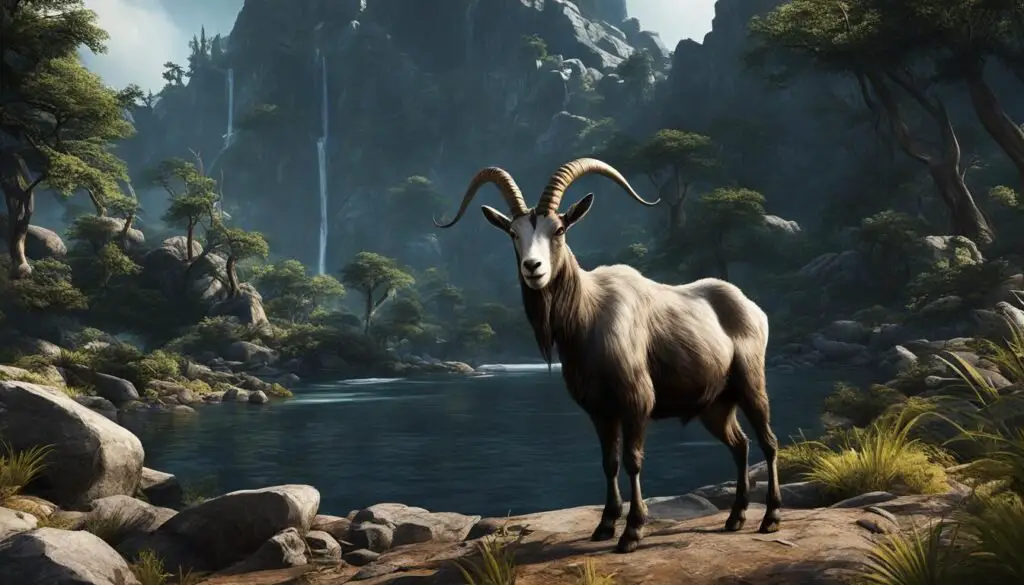
Pan, the Greek god of the wild, holds a significant role in Greek mythology as the god of fields, groves, and wooded glens. He embodies the untamed wilderness, wandering through forests and mountains. In these natural environments, Pan watches over the creatures that inhabit them, serving as their guardian and protector.
Ancient Greeks revered Pan for his deep connection to nature, which was deeply rooted in their culture. They held great reverence for the natural world and recognized the power and beauty it possessed. Pan’s depiction in shrines and natural settings reflects this reverence, showcasing the ancient Greeks’ deep appreciation for the untamed landscapes that surrounded them.
- Pan, god of the wild
- Pan, god of fields
- Pan, god of groves
- Pan, god of wooded glens
Pan’s influence also extends beyond Greek mythology. His portrayal in art, literature, and music throughout history demonstrates the enduring fascination with his connection to nature. Pan’s representation of the wild and his constant presence in natural settings continue to captivate and inspire, reminding us of the power and beauty of the natural world.
Pan’s Musical Talents and the Pan Flute
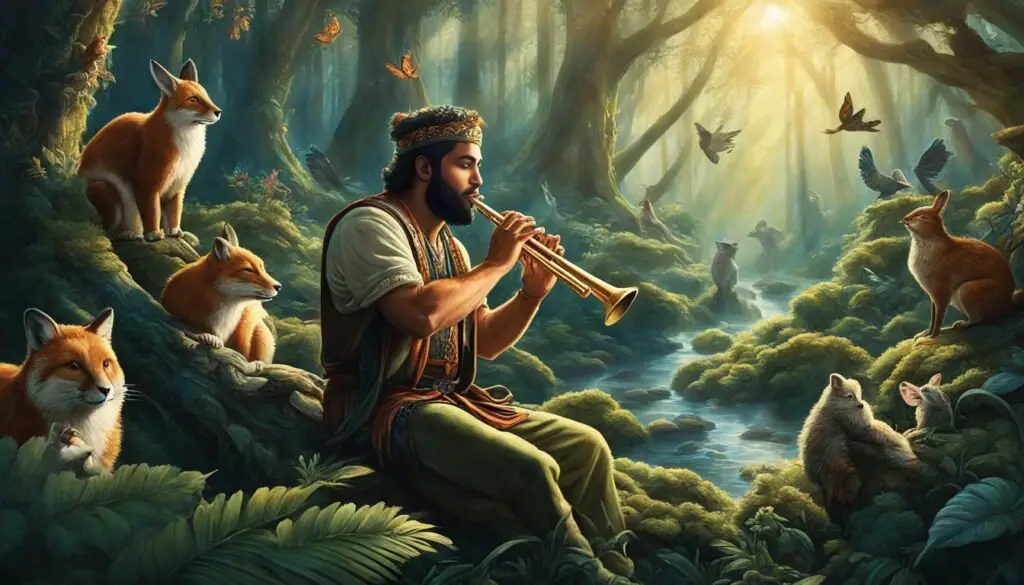
Pan, the Greek god of nature and shepherds, is not only revered for his connection to the wild and pastoral life but also for his incredible musical abilities. He is widely known as a skilled musician and is often depicted with his iconic musical instrument, the Pan flute.
The Pan flute is a fascinating creation credited to Pan himself. Legend has it that Pan fell deeply in love with the beautiful nymph Syrinx. However, Syrinx, not reciprocating his feelings, chose to transform herself into a bed of reeds to escape his advances. Undeterred, Pan gathered the reeds and skillfully crafted them into the enchanting Pan flute, forever immortalizing his unrequited love.
The Pan flute holds great significance, symbolizing Pan’s musical talents and the transformative power of art. When Pan plays the Pan flute, its haunting melodies echo through the wild, captivating all who hear it. The ethereal music of this instrument is said to evoke emotions of joy, melancholy, and even spiritual transcendence.
It is through the Pan flute that Pan expresses his deepest emotions and connects with the natural world. The gentle breeze passing through the reeds creates enchanting tunes that harmonize with the rustling leaves, the flowing rivers, and the whispering fauna of the wild.
As a skilled musician, Pan’s melodies not only resonate within the hearts of mortals but also hold power over nature itself. His music has the ability to charm animals, coaxing even the most timid creatures from their hiding places. Birds, foxes, and rabbits are known to dance to the melodies of his flute, enchanted by its bewitching sound.
It is this blend of musical prowess, weaving the natural world and the divine, that elevates Pan’s status as a beloved deity. His music brings comfort, inspiration, and a sense of awe to all who encounter it. It serves as a reminder that even in the untamed wilderness, there is harmony, beauty, and the transformative power of art.
Pan as the Patron Deity of Shepherds
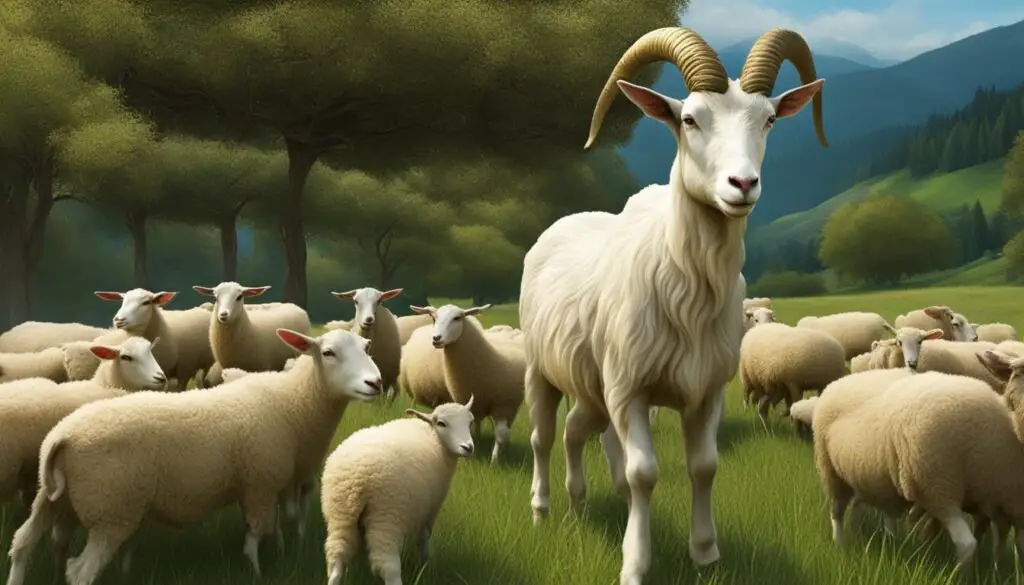
Pan holds a special place as the patron deity of shepherds. Shepherds would often seek his protection and guidance, as he was believed to watch over their flocks and ensure their well-being. Pan’s association with pastoral life reflects the rural nature of ancient Greek society and the importance of shepherding as a way of life. In this role, Pan embodies the rustic charm and connection to nature that shepherds hold dear.
Shepherds in ancient Greece revered Pan as their guardian, recognizing his unique understanding of their daily tasks and the challenges they faced. They would offer prayers and sacrifices to Pan, seeking his favor and protection over their flocks. Pan’s connection to shepherding symbolizes the harmony between humans and animals within the natural world.
The Greek god Pan’s watchful presence and vigilance ensured the well-being of the shepherds’ livelihoods. His association with pastoral life represented the simplicity, tranquility, and interconnectedness of rural communities in ancient Greece. Shepherds looked upon Pan not only as a deity but also as a companion and source of inspiration.
Responsible for the Prosperity of Flocks
Shepherds believed that Pan’s guidance and blessings were essential for the prosperity of their flocks. They recognized his authority over the animal kingdom and trusted that he would ensure the safety and abundance of their herds. Through rituals and offerings, shepherds sought to maintain a harmonious relationship with Pan and express their gratitude for the abundance provided by their flocks.
Divinity and nature intertwined in the ancient Greek countryside, making Pan’s presence and influence crucial for the well-being of both shepherds and their livestock. As the patron deity of shepherds, Pan’s connection to pastoral life reinforced the deep-rooted bond between humans, animals, and the land they inhabited.
Harbinger of Prosperity
Shepherds celebrated Pan not only as their guardian but also as a harbinger of prosperity. They believed that Pan’s benevolence and protection would ensure the fertility and successful breeding of their animals. The vibrant and abundant pastures became a testament to Pan’s influence, signaling a prosperous future for both shepherds and their flocks.
The mythology surrounding Pan portrays him as a god who embraced the pastoral way of life with joy and reverence. His presence reminded shepherds of the inherent connection between human existence and the natural world, reinforcing the cyclical nature of life and the vital role played by shepherds in maintaining harmony within the Greek countryside.
Pan’s Role in Greek Religious Practices

Pan, the Greek god of nature, shepherds, and rustic music, held a significant role in ancient Greek religious practices. His worship took place in natural settings, such as caves or grottoes, that symbolized his realm.
Devotees would gather in these sacred spaces to pay homage to Pan and seek his blessings. These rituals and practices were deeply rooted in Greek society and reflected the importance of Pan in their cultural and religious traditions.
Pan’s shrines and sanctuaries were scattered throughout Greece, with Arcadia being the principal seat of his worship. These locations served as focal points for religious ceremonies and were adorned with offerings and dedications to honor the god.
Worshipers believed that by communing with Pan in these sacred spaces, they could tap into his divine power and receive his protection and guidance. They would engage in various rituals, including prayers, offerings, and music, to evoke Pan’s presence and invoke his favor.
Visiting Pan’s shrines and participating in these rituals provided a sense of spiritual connection and affirmation of the natural world. It allowed individuals to express their reverence for Pan and pay tribute to his role as the god of nature and shepherds.
Overall, Pan’s role in Greek religious practices showcases the significance of his worship in ancient Greek society and highlights the deep reverence and connection that the Greeks had with the natural world.
Legends and Tales of Pan’s Mischief
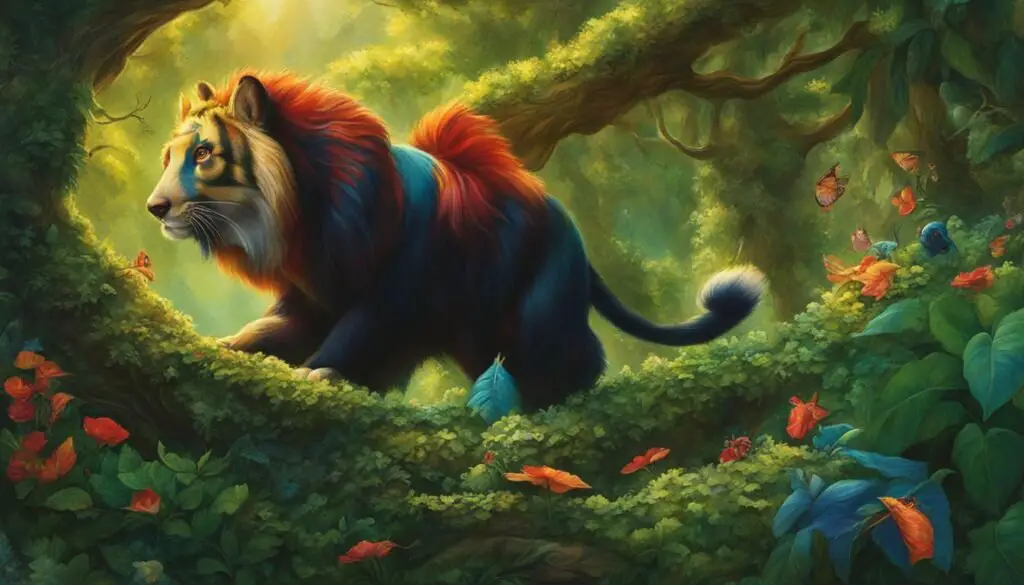
Pan, the mischievous Greek god, is renowned for his playful nature and lighthearted interactions with other gods. Depicted as a joyful and exuberant deity, Pan finds delight in playing pranks and causing chaos. He embodies the spirit of fun and spontaneity, infusing a sense of whimsy into the divine realm.
One of the most famous stories involving Pan revolves around his musical contest with Apollo. In this legendary competition, Pan’s unconventional music captivated the gods and showcased his unique talent. His melodic tunes, played on the pan flute he crafted from the reeds of the nymph Syrinx, enchanted even the most stoic gods, proving that Pan’s creativity knows no bounds.
Moreover, Pan’s pursuit of the nymphs adds depth and complexity to his character. His relationships with nymphs like Syrinx and Echo reflect the complexities of love and desire. Pan’s playful amorous pursuits often led to unpredictable outcomes, further highlighting his mischievous nature.
Whether engaging in friendly pranks, mesmerizing gods with his music, or capturing the hearts of nymphs, Pan’s mischievous spirit is an integral part of his mythological persona. These legends and tales reveal the multidimensionality of Pan, showcasing the divine’s ability to blur the lines between order and chaos, all while maintaining a sense of charm and joy.
Legendary Contest: Pan vs. Apollo
In one celebrated tale, Pan found himself engaged in a musical duel with the renowned god Apollo. Despite Apollo’s mastery of the lyre, Pan stood his ground, captivating the gods with his unconventional melodies. Even the stoic Zeus couldn’t resist tapping his foot to the rhythm of Pan’s music. The contest highlighted Pan’s mischievous nature and affirmed his place among the gods as a unique and talented musician.
Unrequited Love: Pan and the Nymphs
As the god of nature and wild places, Pan held a profound fascination for nymphs, ethereal beings who personified the spirit of nature. His pursuit of nymphs like Syrinx and Echo exemplified his playful and passionate demeanor. However, Pan’s amorous endeavors often ended in unrequited love or metaphorical transformation. These encounters with the nymphs added complexity to his character and showcased the intricate web of desire within Greek mythology.
With Pan at the center of these legends and tales, Greek mythology comes alive with his mischievous aura. His unconventional music, playful interactions with other gods, and pursuit of ethereal nymphs contribute to the richness and depth of his character. Pan’s mischievous nature serves as a reminder that even the gods have a mischievous side, adding a touch of whimsy to the ancient tales that continue to captivate audiences to this day.
Pan’s Symbolism and Influence in Greek Culture
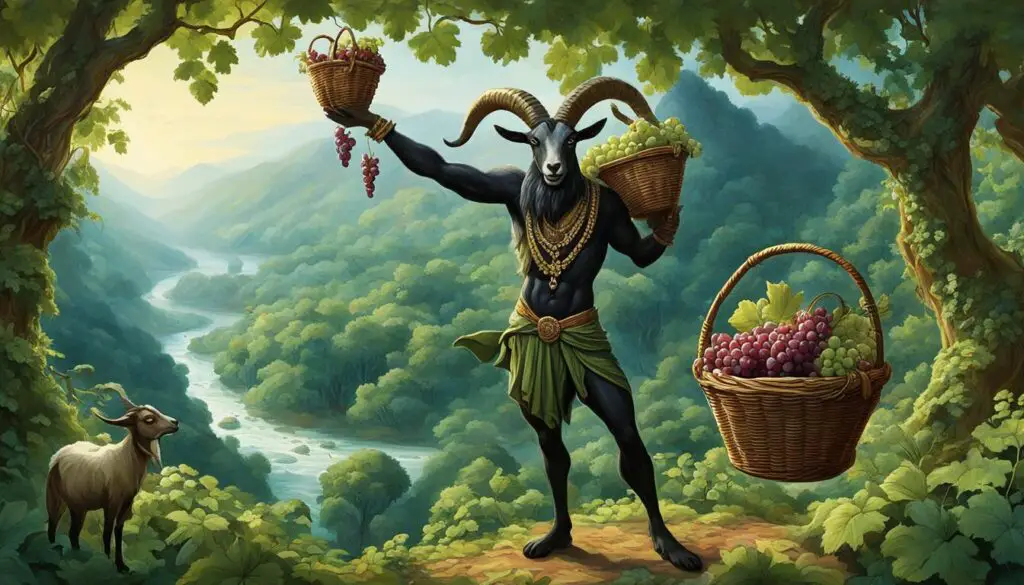
Pan, the Greek god revered for his association with nature, shepherds, and rustic music, holds significant symbolism and influence in Greek culture. As an embodiment of the wild and untamed aspects of the natural world, Pan serves as a powerful connection between humanity and nature itself.
One of Pan’s key symbolic representations lies in his role as a god of shepherds and musicians. Shepherding, a prominent occupation in ancient Greece, symbolized the rural way of life and the harmonious coexistence between humans and the environment. Pan’s association with shepherds reinforces this connection, highlighting his role as a guide and protector of flocks and herds.
Furthermore, Pan’s symbolism extends beyond his ties to shepherding and encompasses the concept of fertility and the arrival of spring. In Greek culture, Pan is closely associated with the rejuvenation and growth that occurs in nature during this season. His presence is often celebrated through festivals and rituals held to invoke his blessings for bountiful harvests and successful breeding seasons. Pan’s representation of fertility serves as a reminder of the interconnectedness between humans, nature, and the cycles of life.
To honor Pan’s influence and significance, the ancient Greeks constructed shrines and sanctuaries dedicated to him throughout Greece. These sacred spaces, often situated in natural settings such as caves or grottoes, provided a physical manifestation of Pan’s presence and allowed worshippers to commune with the divine. These rituals and practices surrounding Pan’s worship became an integral part of Greek cultural and religious traditions, deepening his influence in ancient society.
The enduring influence of Pan can be seen not only in ancient Greek culture but also in subsequent periods of history. Pan’s depiction in art, literature, and music during the Romantic era highlights his enduring appeal and impact on artistic expression. Furthermore, Pan’s image and symbolism continue to resonate in modern Neopagan and nature-based spiritual movements, where he is revered as a deity connected to the wild and natural elements of the world.
In conclusion, Pan’s symbolism and influence in Greek culture are far-reaching and profound. From his representation of the wild and untamed aspects of nature to his role as a patron deity of shepherds and music, Pan’s significance is intertwined with the essence of Greek society. As a symbol of fertility and the arrival of spring, Pan’s presence evokes a sense of connection to the natural world and the cycles of life. His enduring influence resonates through time, bridging the gap between ancient traditions and modern interpretations of spirituality and art.
Conclusion
Pan, the Greek god of nature, shepherds, and rustic music, has left an indelible mark in Greek mythology. His distinctive appearance, musical prowess, and deep connection to the natural world have intrigued and fascinated people throughout history. But Pan’s influence doesn’t stop at ancient Greek culture – he has become a significant figure in the Romantic era and the modern Neopagan movement.
The tales and legends surrounding Pan continue to captivate and inspire, showcasing the enduring legacy of this captivating deity. From his mischievous nature to his playful interactions with other gods, Pan’s character adds depth and complexity to Greek mythology. He symbolizes the wild and untamed aspects of nature, serving as a bridge between humanity and the natural world.
Whether it’s his role as the patron deity of shepherds, his musical talents and the invention of the Pan flute, or his association with fertility and the arrival of spring, Pan holds a prominent place in Greek culture and beyond. Festivals and rituals honoring Pan were held to invoke his blessings for bountiful harvests and successful breeding seasons.
As we delve into the rich tapestry of Greek mythology, the figure of Pan emerges as a symbol of the ever-present connection between humans and the natural world. His stories and legacy continue to resonate, reminding us of the enduring power of nature and the enigmatic gods who rule over it.
FAQ
Who is Pan in Greek mythology?
Pan is the god of nature, the wild, shepherds, flocks, and mountain wilds. He is the son of Hermes and a daughter of Dryops or Penelope.
What is Pan known for in Greek mythology?
Pan is often depicted with the hindquarters, legs, and horns of a goat. He is associated with the pan flute and is connected to fertility and the season of spring.
How is Pan related to other gods?
Pan has similarities with the Roman god Faunus and is revered in both ancient and modern contexts.
What are some stories about Pan?
One famous story involves Pan engaging in a musical contest with Apollo, where his unconventional music captivated the gods. Additionally, Pan’s pursuit of the nymphs, such as Syrinx and Echo, adds depth and complexity to his character.
Why is Pan associated with shepherds?
Pan holds a special place as the patron deity of shepherds. Shepherds would often seek his protection and guidance, as he was believed to watch over their flocks and ensure their well-being.
Where was Pan worshipped?
Pan was worshipped in natural settings, such as caves or grottoes, that represented his realm. His shrines and sanctuaries were scattered throughout Greece, with Arcadia being the principal seat of his worship.
What does the Pan flute symbolize?
The Pan flute symbolizes both Pan’s musical abilities and the transformative power of art. It is said that Pan created the Pan flute from the reeds of the nymph Syrinx, immortalizing his unrequited love for her.
What does Pan symbolize in Greek culture?
Pan symbolizes the wild, untamed aspects of nature and serves as a connection between humanity and the natural world. He represents fertility and the arrival of spring, embodying the rejuvenation and growth that occur in nature.
How has Pan’s influence endured over time?
Pan has become a significant figure in the Romantic era and the modern Neopagan movement. The tales and legends surrounding Pan continue to captivate and inspire, showcasing the enduring legacy of this captivating deity.


